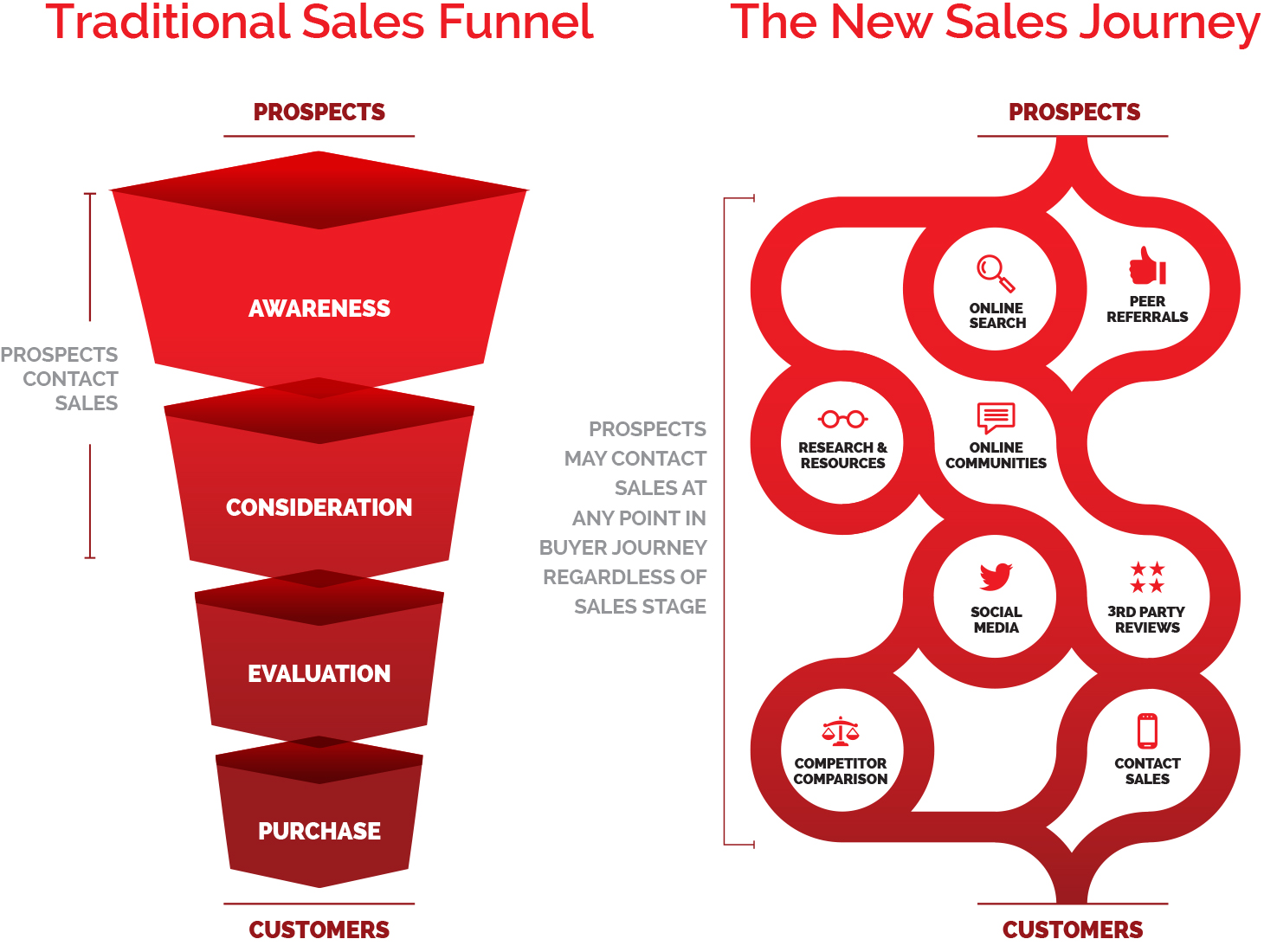In part 1 we shared how greater access to information has fundamentally changed the way B2B customers buy products and services. As buyers take more control of their purchasing journey, they seem to enter and exit the sales pipeline at various points in the buying process. This essentially renders the old sales funnel model, in which everyone enters the sales process at the top of the funnel and follows a similar buying experience, irrelevant. The new sales pipeline is made up of a complex web of individual buyer paths intersecting at the various sales and marketing touch points.

This new reality is impacting sales in some major ways:
- Sales roles are morphing
- Marketing is becoming a bigger part of sales
- Formal sales processes are no longer enough
- Enablement tools are more important than ever
Let’s discuss these in more detail:
Sales Roles Are Morphing
In the past, B2B sellers were the main source of where buyers went to for information about the company, products/services and pricing. As more and more of that information is readily available in a self-serve format, sellers are having to do less around building awareness and consideration and more around final solution building and negotiation. The extent of this transformation depends on the complexity of the product/solution, but sales organizations should take stock of this. If it is the case that sellers are having to do less “selling,” then sales leadership should re-evaluate their sales roles, structure, hiring profile, and compensation model. There is definitely a reason why inside sales teams are growing 50% faster year-over-year than outside sales teams.
Marketing Is Becoming A Bigger Part Of Sales?
There have always been challenges around sales and marketing working in concert. Never has that been more important than in this new selling environment. In a world where buyers are empowered to determine their own buying path, marketers need to consider the complete end-to-end buying experience. Marketers need to enable buyers to move through the buying process on their own terms by providing rich content and resources that will be relevant to where they are and allow them to progress at their own pace. A recent report by Aberdeen proves this concept by showing that Best-in-Class companies are 69% more likely than all others to align marketing content with key stages of the sales process.
Formal Sales Processes Are No Longer Enough
These days, no one can argue that sales organizations with defined sales processes hit their sales targets more often than sales organizations without a formal sales process. A recent?CSO Insights study found that 16% more reps hit quota with a defined sales process.
The difference now is that having a defined sales process is no longer enough and in some cases might actually hinder sales performance. Recalling that the sales funnel is now more like a complex web of different buyer pathways, buyer journeys are no longer linear. Therefore, your sales process shouldn’t be linear either. Rather, think of your sales process more modularly and in terms of playbooks. Consider developing “plays” based on scenarios such as: If a buyer is identified to be in this sales stage and has done X or Y, than sellers should do this. This new, tailored approach to sales process is more dynamic and will enable sellers to meet buyers where they are and give them a more personalized experience.
Enablement Tools Are More Important Than Ever
As selling becomes more complex, sellers need tools that help simplify the complexity and still meet rising buyer expectations. That means tools that help sellers quickly understand where buyers are at in their buying journey and help them customize an approach relevant to the situation. Leading sales organizations invest in sales enablement tools because they know it is a big part of improving the performance of the middle-third of their sales force. Enablement technology has advanced significantly in the past five years and most of the solutions are cloud based, snap onto your existing CRM systems, and support dynamic sales processes.
Is your sales organization empowering buyers or hindering them? It might be time to rethink your sales strategy and operations to better align to how your customers want to buy.?
About the Author
Jared Dodson is a Manager at Lenati, a marketing and sales strategy consultancy, where he co-leads the Sales Performance Practice. Jared helps businesses develop sales strategies and implement process, enablement and analytics that drive improved sales revenue, productivity and overall performance. Jared has led sales initiatives with high growth startups as well as Fortune 500 companies including Johnson Controls, T-Mobile and Microsoft.






